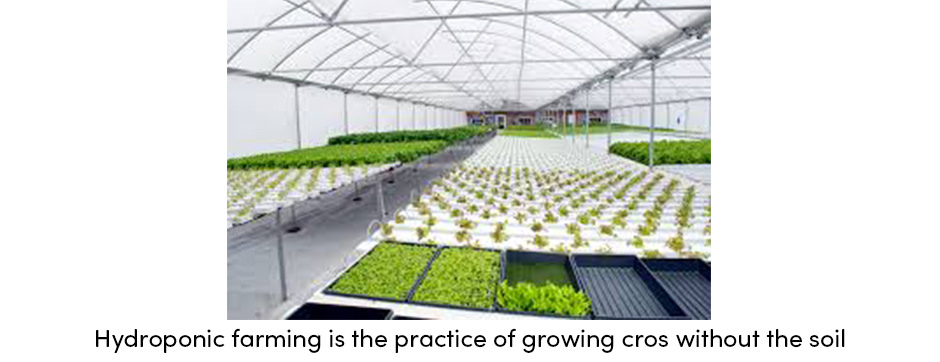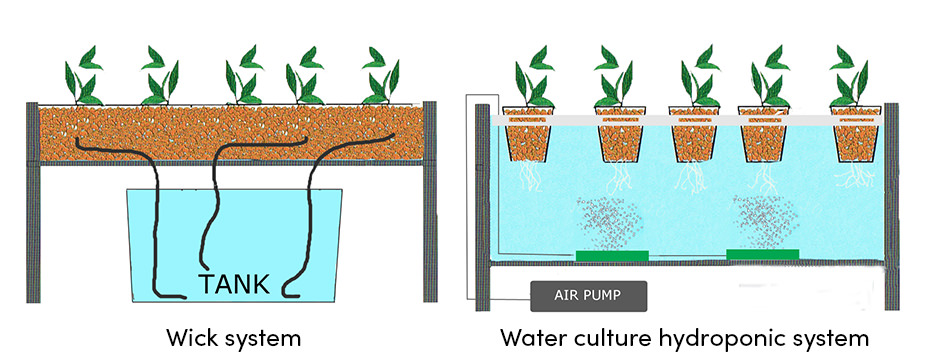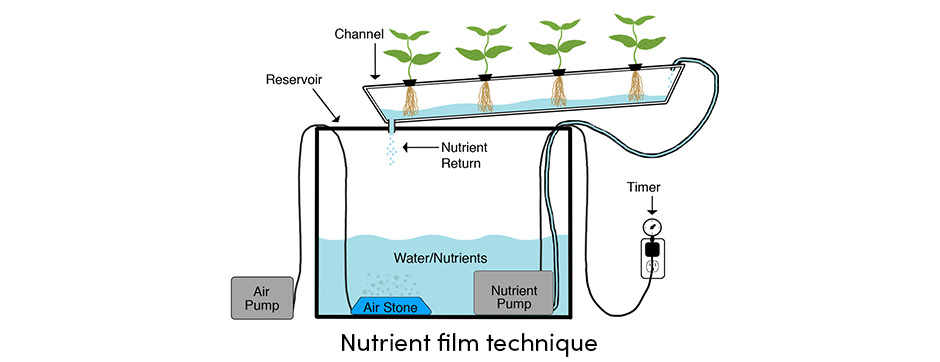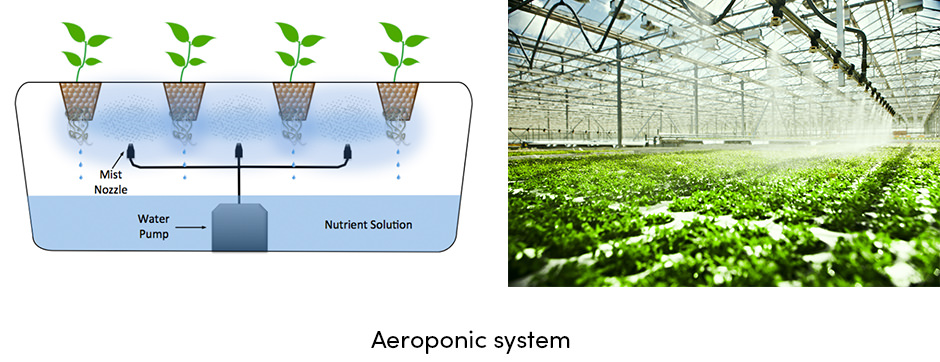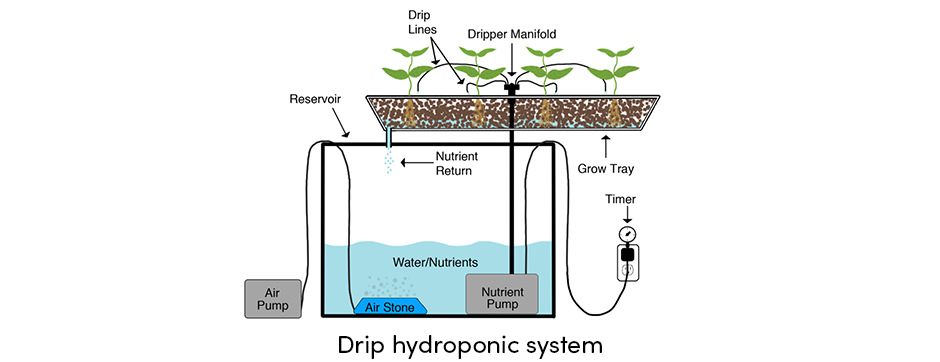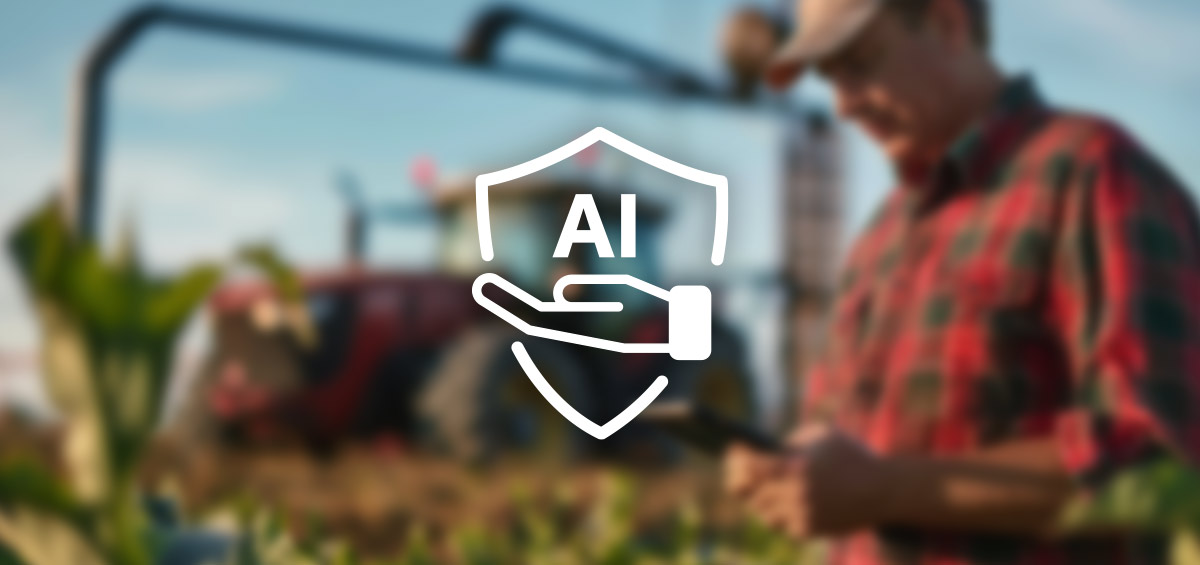As the crop production is often limited by environmental factors, interest in alternative farm practices is increasing. In this regard, hydroponic farming serves as a promising farm practice that offers a solution for some serious challenges of crop production such as:
- Lack of arable land
- Climate change
- Deforestation
- Rising fossil fuel prices
- Ecosystem degradation
- Rise of water and food scarcity
In this regard, hydroponic farming as a soilless farm practice directly eliminates the dependence of crop production on the soil as one of the primary resources.
What Exactly is Hydroponic Farming?
Hydroponic farming is the practice of growing crops by using mineral nutrient solutions instead of soil to deliver water and minerals to the crop roots. Traditionally, the soil supports the crop’s roots by helping them remain upright and ensuring the delivery of water and essential nutrients. In hydroponic farming, crops are supported artificially. Therefore, the nutrients are supplied by using various practices that bring mineral nutrient solutions to the crops.
Types of Hydroponic Farming
There are various types of hydroponic farming. Hydroponic farms can be set outdoors, as well as indoors within greenhouses, or in a completely controlled environment by using artificial light.
There are the two main types of hydroponic farming systems:
- Passive system uses a growing medium to retain moisture and supply the nutrients
- Active system brings the water and nutrient solutions by utilizing the pipes
Finally, there are many variations and possible settings for hydroponic farms. However, the most popular hydroponic farming types are:
- Wick system: the passive system, meaning there are no floating parts; the crops are supported by ordinary trays or other growing mediums (perlite, vermiculite, or coconut fiber); the nutrient solutions are supplied from the reservoir with a wick.
- Water culture system: the simplest of all active hydroponic systems, the roots of the crops are completely immersed in the water; the platform that holds the plants floats directly on the nutrient solution; an air pump supplies the oxygen and the nutrient solution to the plant roots.
- Nutrient film technique system: the nutrient solution and oxygen are pumped from a reservoir into the growing tray; the plants absorb the nutrients and oxygen from the flowing solution and then drains nutrients back into the reservoir; giving the crops a constant flow of nutrients.
- Aeroponic system: crop roots hang in the air; the timer controls the nutrient pump which provides nutrients to the crops via mists every few minutes.
- Drip system: probably the most used hydroponic system; the nutrient solutions and water are pumped from a reservoir to each plant using a small drip line; the pump is controlled by the timer.
Major Disadvantages of Hydroponic Farming
Hydroponic crop production can be a challenging practice for some farmers, particularly because it demands knowledge of crop nutrient interaction, as well as an understanding of the hydroponic system. Since it’s extremely important for the farmer to immediately respond to any changes in nutrient concentration, hydroponic crop production requires regular monitoring. Furthermore, hydroponic farming also requires high set-up costs. Finally, hydroponic farms are very vulnerable to power failures and water-borne diseases.
Why Practice Hydroponic Farming?
Regardless of all of the disadvantages, hydroponic farming is a sustainable farm practice that offers a few remarkable benefits:
- Farmers don’t need the soil to grow the crops; hydroponic farms are feasible in areas that are usually not suitable for traditional farming (arid, eroded, diseased, infertile)
- Ability to grow crops year-round; there are no seasonal limits
- Crops can develop faster
- Improved crop nutrition; crops don’t waste energy trying to find the nutrients in the soil
- Water efficiency; hydroponic farming uses less water than soil-based farming; excessive water is collected and pumped right back to the plants
- Nutrients don’t leach away
- There is no competition with weeds
- Soil-borne diseases are eliminated
- The practice is less-labor intensive
- It’s possible to grow in a monoculture; a farmer can be focused on market demands instead of crop rotation practices
- Reduced transportation; crop production can be closer to the consumers
Considering all of the aforementioned benefits, hydroponic farming is a practice that has the potential to eliminate many of the limitations seen in traditional crop production. Therefore, it could serve to be a turning point in feeding the global population.
Farming year-round, without having to account for soil fertility, drought, weeds, crop rotation, and soil preparation practices, is a practice that sounds almost too good to be true. However, it is possible and really quite simple.
So, move out of your comfort zone and open your mind to a totally different type of farming- hydroponics.
Text sources: National Agricultural Library
Image sources: NEW SOUTH FOOD CO. || Growth Technology || GrowMedUniversity || Off-Grid Gorilla || Hawaiian Hydroponics & Garden

